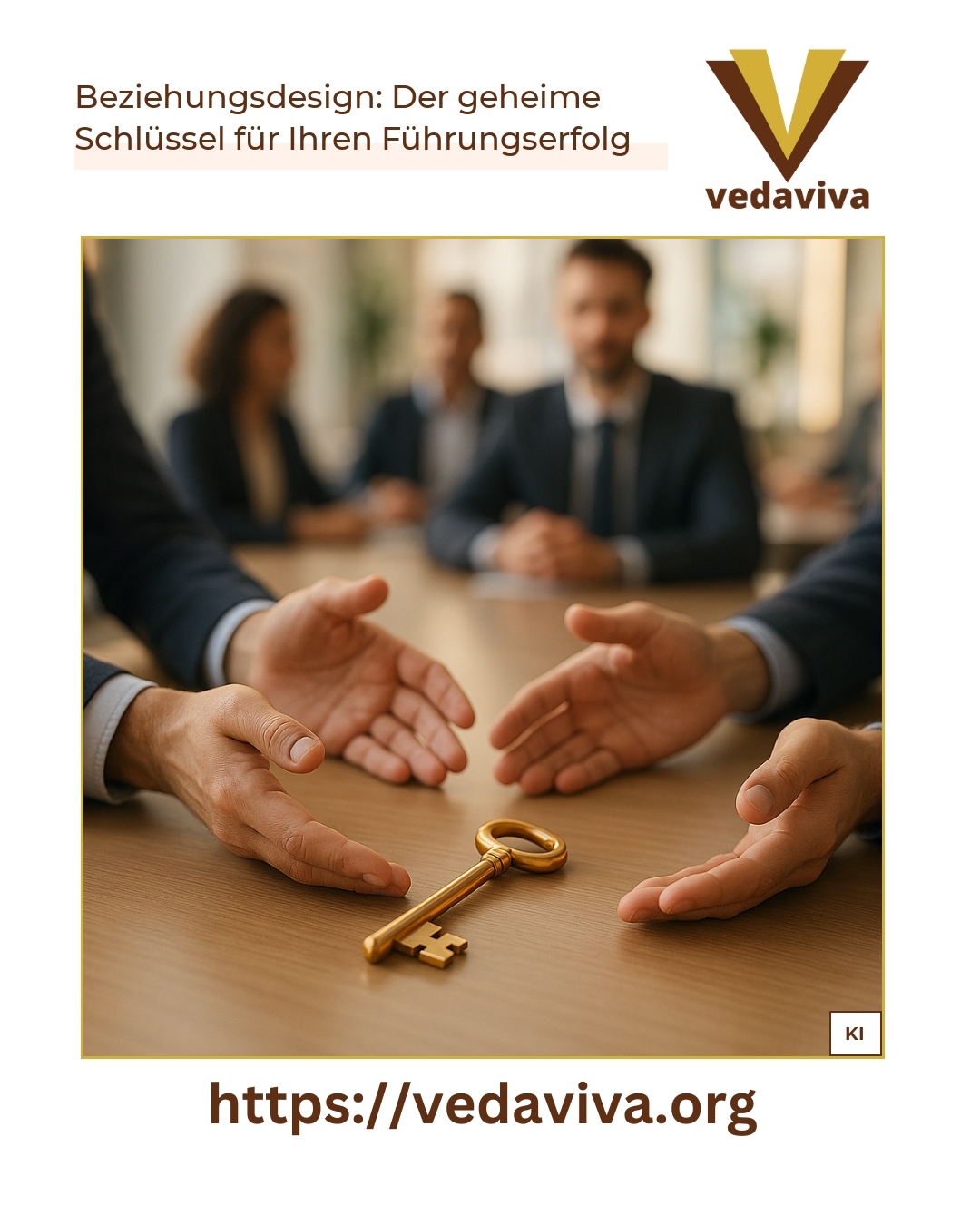Managers face a major challenge every day. They have to lead teams, achieve goals and motivate people at the same time. However, many forget one important aspect: relationship design. The conscious design of interpersonal relationships determines whether leadership is really successful. Relationship design means that you not only distribute tasks, but also build trust. It is about how you communicate and work together with your employees. Relationship design is the secret key to sustainable leadership success, because people work better together when they feel understood and valued. [1]
What is relationship design and why it is so important
Relationship design describes the conscious organisation of working relationships. As a manager, you create a foundation for genuine cooperation. This is not a new invention, but a professional approach to personnel management. Relationship design means that you understand how people work. You recognise needs and respect different personalities. [1] This goes far beyond traditional management and touches on the emotional level of cooperation.
In a professional context, relationship design often determines success or failure. Employees who feel valued in their role are more committed. They accept criticism constructively and are more motivated to work towards common goals. Relationship design creates a climate of trust. This trust is like fuel for your team and enables real performance.
Understanding the basics of relationship design
Every management relationship has asymmetrical structures. This means that you, as the superior, have more influence. [2] But good relationship design does not mean abusing this power. It's about using it responsibly. You create space for dialogue and participation. The best kind of relationship design enables interaction between you and your employees.
The first step in good relationship design is clarity. Talk openly with your team about what you need. Also ask what your employees need. These discussions create mutual understanding and form the basis for constructive conflict resolution. [1] Relationship design only works if both sides know where they stand.
Relationship design in practice: How to create real working relationships
Relationship design is not an abstract concept, but something you live every day. It starts with small gestures and requires real presence. When you talk to your employees, you really listen. It sounds simple, but it's rare. Many managers are already thinking about the next task. Good relationship design means taking the time to really listen to people.
Relationship design is also reflected in the way you give feedback. Constructive feedback should not be humiliating, but should promote development. [3] This shows that you are interested in the further development of your employees. A positive feedback culture is created when people feel that their opinions and ideas are valued. In this way, you support the commitment of each individual through relationship design.
Practical examples of successful relationship design
BEST PRACTICE at company XYZ (name changed due to NDA contract)
A manager at a technology company realised that her meetings were always impersonal. She introduced a new ritual: Every Monday, she starts the team meeting with five minutes of personal dialogue. Someone briefly talks about their weekend or their family. This small change through conscious relationship design led to a completely different atmosphere. The employees opened up more, asked more questions and came up with more creative solutions. The relationship design in this small detail positively changed the entire team dynamic.
Another example shows how important relationship design becomes in difficult times. A team had to completely reorganise itself following restructuring. The manager focussed on open communication and regular one-to-one meetings. She asked how people were feeling and what was bothering them. This relationship design helped the team to cope better with the change. The cancellation rate remained low and productivity increased faster than in comparable teams.
BEST PRACTICE at ABC (name changed due to NDA contract)
A project manager in a consulting firm decided to change his relationship design. Instead of just talking about project content, he took an active interest in the personal goals of his project members. He regularly asked them what skills they wanted to develop and how he could support them in doing so. This relationship design resulted in employees staying in the project much longer and their performance increased significantly. They felt that they were not just seen as a resource, but as valuable people with their own ambitions.
A third example illustrates the power of relationship design in conflict situations. Two project teams had a lot of friction. The superior manager did not rely on instructions, but on relationship design. She held individual discussions with key people and understood the underlying needs and fears. She then organised a moderated exchange based on mutual understanding. The relationship design helped to move from pure positions to genuine interests and to find a viable solution.
The balance between closeness and distance in relationship design
Relationship design is not about falling in love with every employee or becoming best friends. It's about professional closeness that respects boundaries. [3] Too much closeness can be just as problematic as too much distance. You need clarity about your role and your boundaries. Good relationship design finds the right balance.
This balance means that you are open and present, but do not leave private boundaries. You can take an interest without interfering. Relationship design also means that you are consistent and stick to the rules you have set yourself. People trust managers who act consistently. If you create closeness through relationship design, but at the same time set boundaries, you create security.
Relationship design and the difference between the factual level and the relationship level
There are two important levels in leadership: the factual level and the relationship level. [6] The factual level comprises strategy, goals, processes and tools. These are the things you can measure and touch. But beneath the surface there is something more powerful: the relationship level with emotions, trust and motivation.
Many managers only focus on the business level. They set goals and expect them to be achieved. But whether goals are actually achieved is decided at the relationship level. [6] Relationship design means taking both levels seriously. You can have the best strategy, but if the relationship is broken, none of it will be realised. Relationship design creates the emotional conditions for achieving goals.
How relationship design supports the factual level
Relationship design and expertise are not mutually exclusive, they complement each other. If you know what to do professionally but lack relationship design, your employees will not go along with you. They may follow you without being truly committed. However, if you combine relationship design with professional clarity, real motivation is created.
A good example is the target. You can say: Your goal is X, that's it. Or you can use relationship design with your employees to clarify why this goal is important and how it fits in with their personal ambitions. The second approach takes more time, but leads to much better results. Relationship design makes the factual level more human and therefore more effective.
Relationship design as a success factor in the modern working world
The world of work is constantly changing. Remote and hybrid working models are normal today. In this situation in particular, relationship design is becoming increasingly important. [3] If you don't see your employees in the office, you have to be more conscious of how you build relationships. You can't just walk past and have a quick chat with someone. You have to use digital formats and create a real connection at the same time.
Relationship design also helps with recruitment. Today, good specialists have many options. They choose companies not only based on salary, but also on leadership culture. Managers who create an attractive work culture through relationship design attract better talent. [3] Relationship design is therefore also a competitive advantage on the labour market.
Relationship design for long-term employee retention
Employees stay with companies that value them. Relationship design is the key to this appreciation. When your employees feel that you really know and understand them, they develop loyalty. [3] This is not manipulative, but genuine. Relationship design means genuine interest in people.
Long-term employee retention through relationship design also has economic benefits. Less fluctuation means lower costs for recruiting and training. But much more important is the continuity and knowledge that remains in the team. Relationship design therefore supports both people and business results.
The different stages of relationship design
Not all working relationships are the same. There are different quality levels of relationship design. [7] The lowest level is the proto-relationship, which is only about mutual performance. Above this comes the exchange relationship with give and take. Then comes the regulated relationship with clear rules. More highly developed are value relationships based on shared ideals. The highest level is the learning relationship, in which both partners grow towards common goals.
Relationship design means consciously working on these stages. You don't have to start with the learning relationship right away. But you should know where you are today and where you want to go. Relationship design is a process that takes time. [7] With genuine interest and patience, you can develop relationships that enable real collaboration.
Developing relationship design: A practical way
Relationship design is a skill that you can learn. [3] You don't have to change your entire personality. It's about working with more conscious attitudes. Start by observing yourself. How do you communicate with your team? Where could you be more open? Where could you listen better? Relationship design starts with self-reflection.
The next step is to experiment and learn. Try out new behaviours. Perhaps you hold more regular one-to-one meetings. Maybe you create more space for personal topics in meetings. Relationship design means that you experiment and then observe what changes. You will quickly realise when good relationship design improves collaboration.
Continuity is also an important aspect. Relationship design is not something you do once and then forget about. It is an ongoing task. [2] You need to interact regularly with your team and maintain relationships. People only feel truly understood if the interaction is continuous.
Relationship design and conflict management
Conflicts arise in every team. But how you deal with conflict depends heavily on your relationship design. [1] If you have built trust through good relationship design, people are more open to difficult conversations. They don't interpret your criticism as a personal attack, but as feedback for improvement.
Relationship design also helps to resolve conflicts more quickly. If you have a good relationship, you can intervene earlier before a small problem becomes a big one. You can also talk more openly about tensions. Relationship design thus creates security for constructive conflict resolution.













